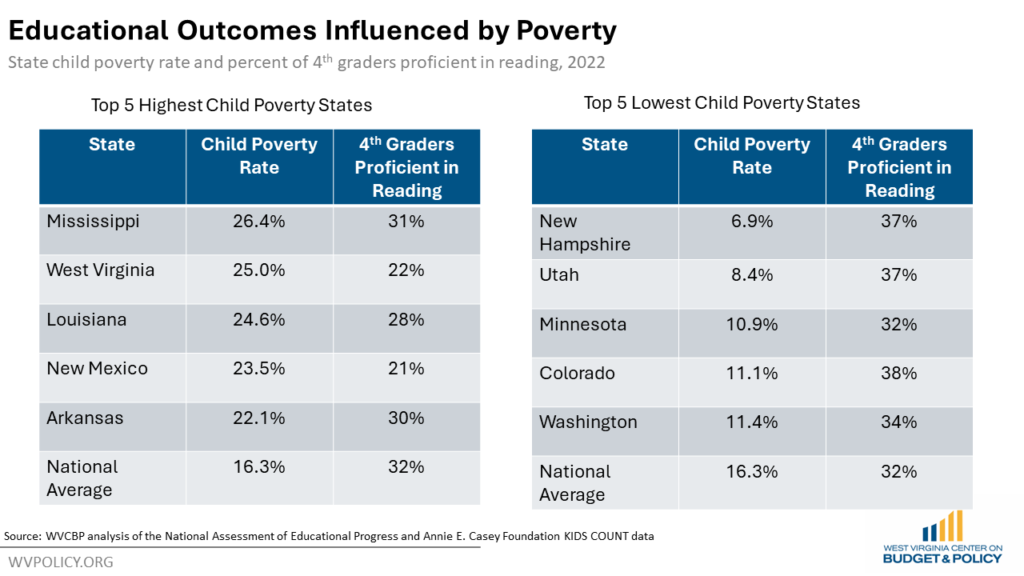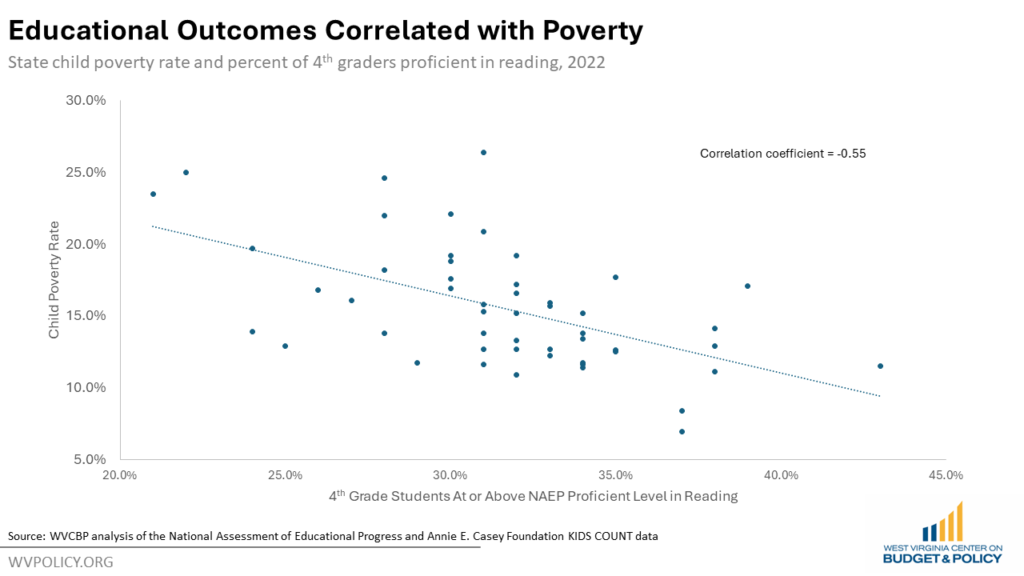One in four children in West Virginia lived in poverty in 2022, the second highest rate of any state in the country. With the state pursuing education reform focused on funneling taxpayer funding out of public schools and into the private sector via the Hope Scholarship, West Virginia’s voucher program which is growing more expensive each year, it is important to consider the economic and social conditions of our state’s children, which play a major role in educational outcomes.
West Virginia’s fourth grade reading proficiency levels were the second lowest in the country in 2022, and it is no coincidence that the state also reported the second highest level of child poverty. Research has shown that child poverty is strongly associated with lower educational outcomes. National figures have shown that low math and science test scores are associated with higher child poverty.
Child poverty rates across the country in 2022 ranged from under 7 percent to over 26 percent, while the share of fourth graders proficient in reading spanned from under 20 percent to over 43 percent. Of the five states with the highest child poverty rates, none had reading proficiency scores above the national average. In contrast, of the five states with the lowest child poverty levels, all fell at or above the national average for fourth grade reading proficiency scores.

The range of poverty rates and test scores demonstrates a correlation between a state’s child poverty rate and fourth grade reading proficiency. In general, the lower a state’s child poverty rate, the higher its children score on reading proficiency tests.

Poverty and socioeconomic status have an impact that goes far beyond test scores. One analysis of longitudinal student outcomes found that a high-scoring student from a low-income household is less likely to go on to obtain a college degree than a low-scoring student from a high-income household. Lower income households have fewer resources to spend on out-of-school academic resources for their children and tend to live in school districts with less funding.
If West Virginia lawmakers truly want to increase educational outcomes for our students, they need to look past discredited policies like school vouchers which have mixed or negative impacts on student achievement and are only available to a narrow subset of families (typically those with higher incomes who live near a private school and meet their often discriminatory eligibility guidelines or are able to homeschool their children). Instead they should focus on increasing the economic health and security of all families and reducing our child poverty rate. Early interventions are more cost effective and tend to have the greatest return on investment since the negative effects of living with few resources snowball over time.
Research has shown that by simply supplementing the income of poor families, particularly through the Earned Income Tax Credit (EITC) and Child Tax Credit (CTC), we can significantly increase the educational achievement of their children. West Virginia can capitalize on this finding by creating a generous state EITC or CTC that builds on the existing federal credits and can help lift more families out of poverty.
Other research has shown that healthier students are better learners. Continuing to support and protect access to health care, particularly by fully funding Medicaid, is also a key factor.
Supporting families in poverty is one of the most effective educational reforms West Virginia can make.